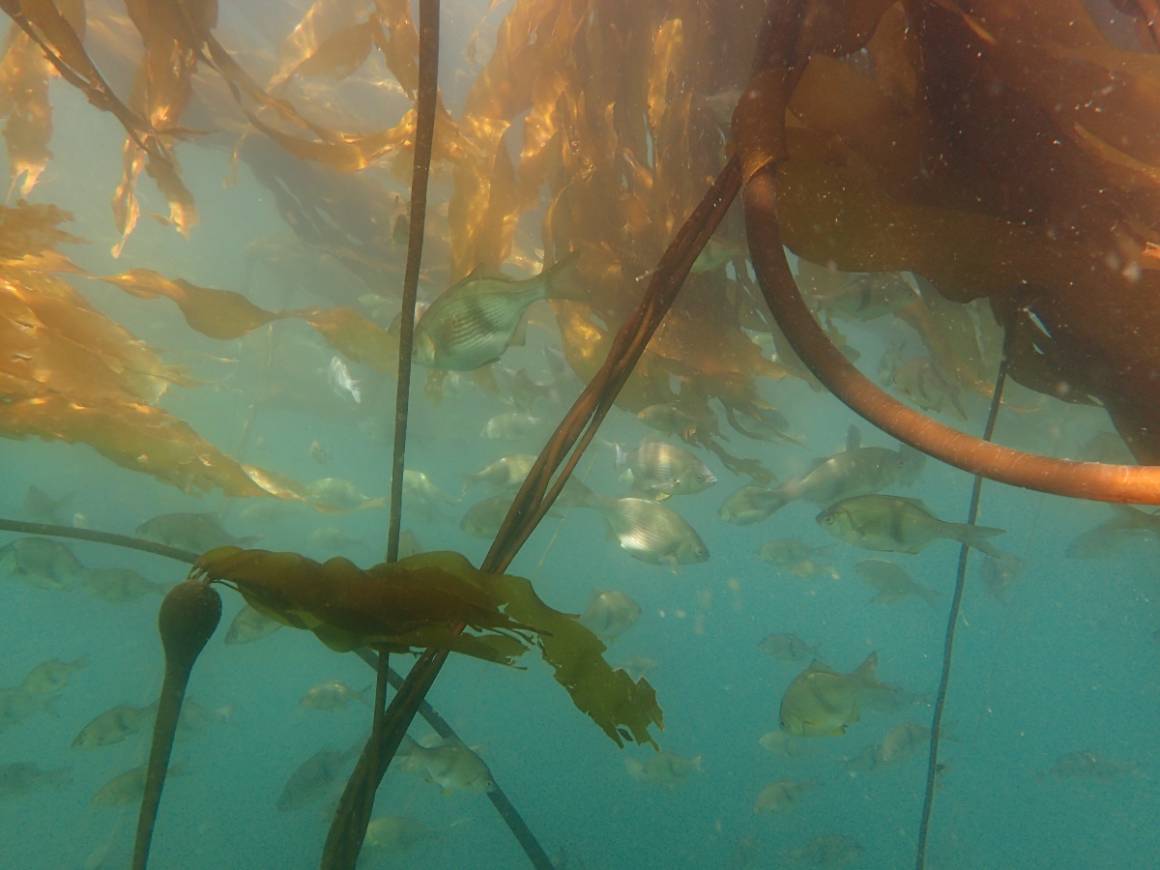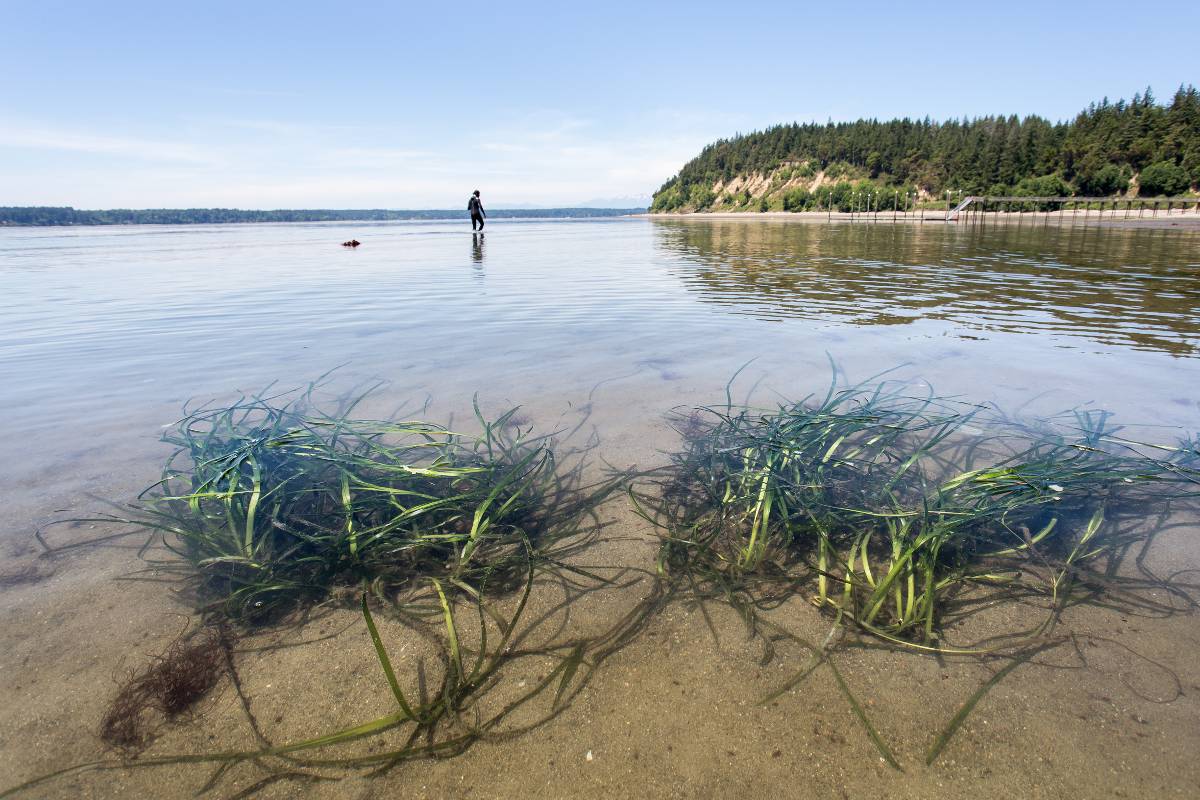Our nearshore environments are home to numerous marine vegetation species, such as kelp and eelgrass, which serve as the foundation for diverse and productive ecosystems. While historically abundant, there has been an observed decline in marine vegetation distribution and abundance across the Puget Sound. There are many potential causes for these declines, including impaired water quality, shoreline development, climate change, and impacts from boating and recreation. A coordinated approach is needed to better understand and address these stressors.
Special Announcement: The Habitat Strategic Initiative Lead has begun development of the new Marine Vegetation Implementation Strategy. Sign up for our Marine Vegetation email list for updates.
Why is Marine Vegetation Important?
Kelp and eelgrass are vital to the health of Puget Sound. These species provide critical habitat for a wide array of marine life found in Puget Sound, including forage fish, rockfish, and salmon, and fuel food webs that support healthy bird and marine mammal populations. Additionally, kelp holds important cultural significance to indigenous peoples of the broader Pacific Northwest and offers economic benefits through activities like fishing, diving, and tourism.
Marine Vegetation Implementation Strategy Development
The Habitat Strategic Initiative Lead has begun development of the Marine Vegetation Implementation Strategy. The Implementation Strategy will support a strategic and programmatic research and monitoring approach to better understand observed declines in kelp and eelgrass. Additionally, the Marine Vegetation Implementation Strategy will describe priority strategies and approaches to protect and recover marine vegetation in Puget Sound. The Implementation Strategy will help guide Puget Sound investments and align recovery opportunities across agencies and programs.
The Implementation Strategy will build off a foundation established through two regional plans, the Puget Sound Eelgrass Recovery Strategy and the Puget Sound Kelp Conservation and Restoration Plan and coalesce the priorities and needs from both plans into a comprehensive strategy. Implementation Strategy development will include identifying and assessing ongoing efforts within the existing recovery plans and engaging with Tribes, partners, and stakeholders to understand needs and opportunities that are best supported and amplified through a formalized Implementation Strategy.
Key Strategies
The Marine Vegetation Implementation Strategy will focus on the following strategies from the Puget Sound Eelgrass Recovery Strategy and the Puget Sound Kelp Conservation and Restoration Plan:
- Understand and reduce environmental and human-caused stressors
- Conserve and protect priority areas for kelp and eelgrass
- Restore degraded eelgrass beds and kelp forests
- Expand education and outreach to user groups and communities
Timeline
- May 2024 – December 2024: Internal planning, initiate conversations with Tribes and partners interested in kelp and eelgrass conservation and recovery efforts.
- January 2025 – June 2025: Iterative strategy development and coordinated input through existing workgroups and local organizations. Content will also inform 2026-30 Action Agenda development.
- July 2025 - December 2025: Public and partner review of draft strategy.
- December 2025: Strategy finalized.
How to be Involved
Sign up for our email list to stay updated on the Implementation Strategy development. If you are interested in getting involved contact Bree Turner, Marine Vegetation Implementation Strategy Lead, at bree.turner@dnr.wa.gov.

Kelp forests provide critical refuge, feeding, and nursery grounds for forage fish, rockfish, and salmon. Photo Credit: Gray McKenna
What Can You Do?
A coordinated effort among tribal, federal, state, and local agencies will be necessary to advance planning, research, and outreach opportunities identified in the regional Kelp and Eelgrass plans and the future Marine Vegetation Implementation Strategy. Opportunities include:

Eelgrass beds grow in sandy environments along the shores of Puget Sound and contribute to a healthy ecosystem by providing habitat, producing oxygen, and protecting coastlines. Photo Credit: Aaron Barna
What can you do?

